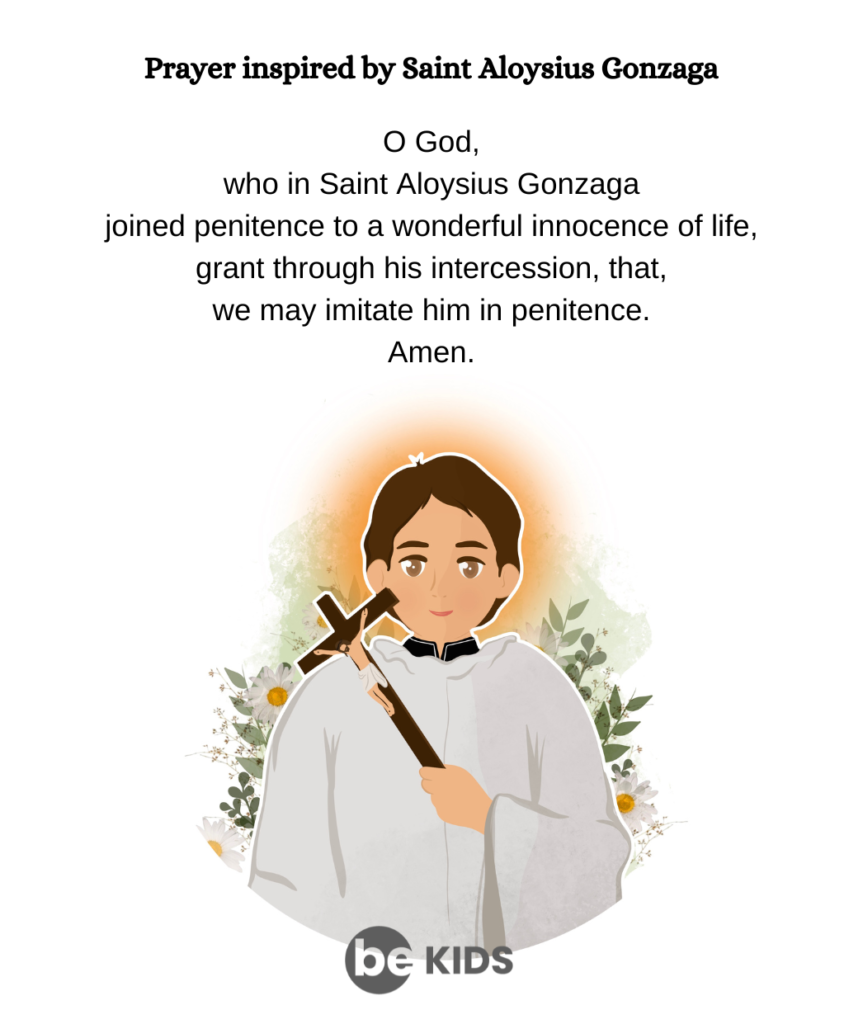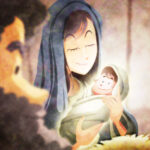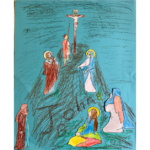
His real name was Luigi, Aloysius being a Latin version of his name. St. Aloysius is often depicted in saintly images that present him as a very different person from the person he really was. In real life one could almost describe Luigi as a rebel!
He was born on the 9th March 1568 in the castle of Castiglione delle Stivieri, in Lombardy, Italy, in one of the noble and most powerful families at the time. His father Ferrante, was the marquis of Castiglione and his mother had been a lady-in-waiting to the wife of Philip II of Spain. Luigi grew up surrounded by wealth and comfort, but he also suffered from a bout of malaria and other health problems relating to his kidneys.
His father had high hopes for Luigi, his firstborn, either for a military career or to become a political figure. Determined to introduce him to the ‘art of arms,’ not only did he insist that Luigi had to accompany him on military training camps when he was only 4 years old, but he also had him dressed in a child-sized suit of armor and provided him with miniature guns. Little Luigi must have been impressed with the chivalry and might have tried to imitate the soldiers’ military stance as well as some heavy foul language that he started to use at home!
When he was 8 years old, together with his brother Rodolfo, he was sent to Firenze, at the court of Francesco Medici to improve his Latin and Italian. During his two-year stay there, he came across literature about the lives of saints and he got to know about the Jesuit missionaries in India. This was the ‘seed’ of his Jesuit vocation. At the same time he became aware of the corrupt environment, the political intrigues, the frivolous life that infiltrates life at court. He was teased when he refused to join the others in their revelries and imitate their foul behaviour. He withdrew within himself, he started praying and fasting even at such a tender age. He was determined to keep away from sin.
It was on his return home that Cardinal Charles Borrromeo, who was paying a visit to the family found out that Luigi, then 12 years old, had not yet received Holy Communion. He was impressed by Luigi’s serious attitudes. He prepared him with catechism lessons and Luigi received his first Holy Communion from the Cardinal himself.
When Luigi was 13 years old, he and his brother Rodolfo accompanied their father to Spain where they were made pages of James, son of Philip II. This experience continued to strengthen his Jesuit call, contrary to his father’s expectations.
By the time he returned to Italy, he had made up his mind. He had decided to follow his call and enter the Jesuit Order against all the wishes of his family, especially his father, whose dreams of power and glory for his son had not materialized. He refused to give permission to Luigi to enter the Order. Luigi renounced his heritage in favour of his brother and presented himself to the General of the Society of Jesus (Jesuits) and in 1587, he took vows as a Jesuit.
Just 3 years later, when Luigi was in Rome studying for the priesthood, a famine and the Black Death broke out in Italy. Voluntarily, he started to help out in the Jesuit hospital during the plague. He privately disclosed to his Spiritual Director, Fr. Robert Bellarmino, that he was revolted by the sights and smell of the sick patients and that he had to fight the repulsion he felt so that he could continue to care for them.
One day after helping a man, infected with the plague, to his bed, he got infected himself. Being of delicate health, he died a short time after, with the name of Jesus on his lips. He was 23 years old. During his life he never wavered from focusing on what God wanted from him: loving Him and his neighbour












